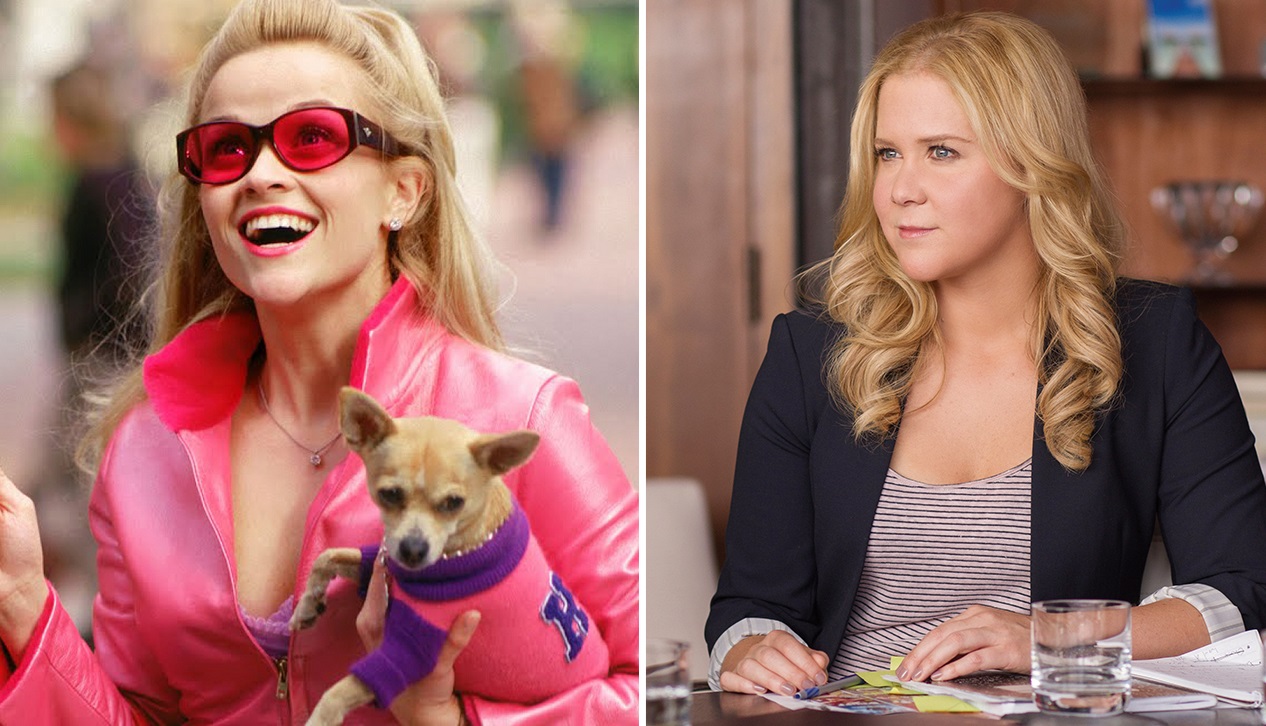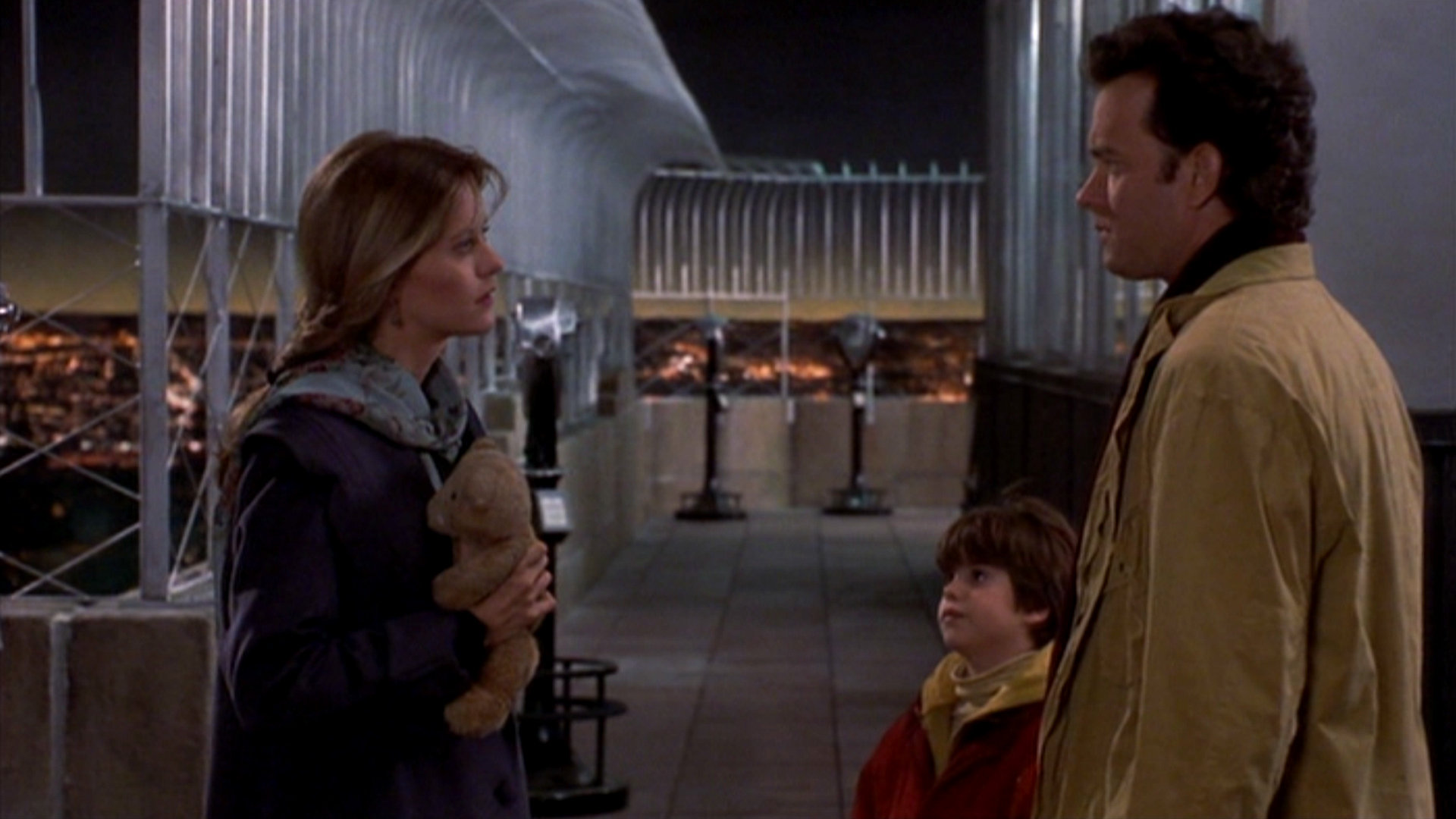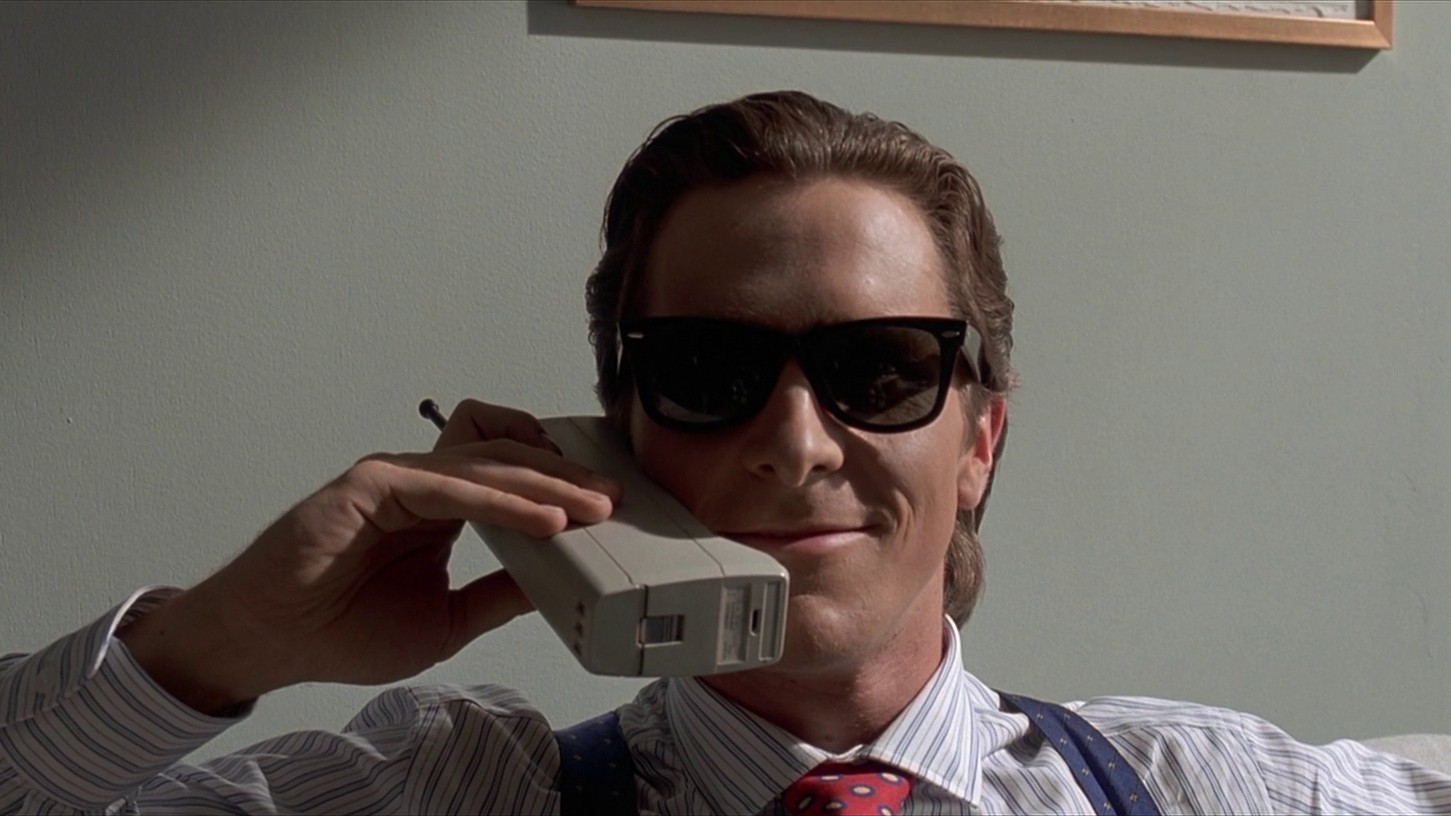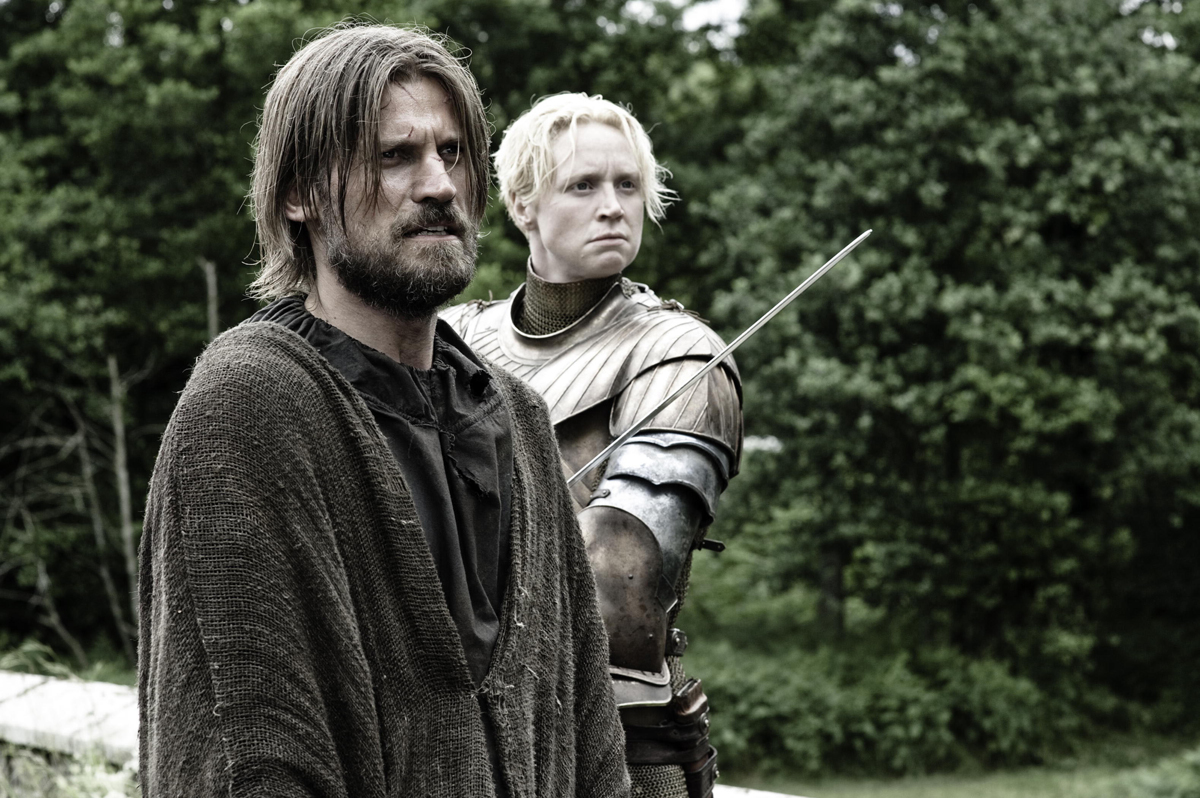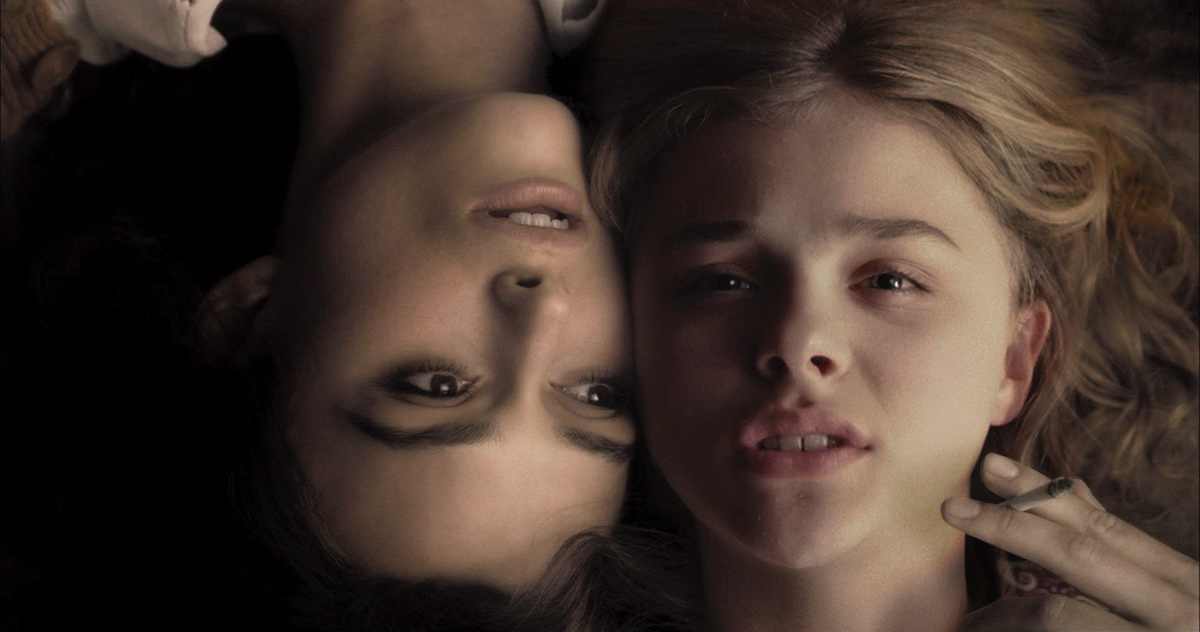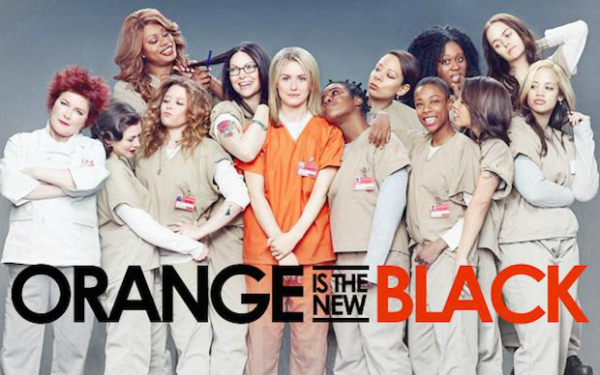This guest post is written by Claire White.
In cinema, female characters do not exist (as subjects), especially in the course of finding love. Looking at the origins of feminist film theory, it is easy to establish why the idea of the non-existent female in cinema is present. However, when female heroines are the main protagonist, the female oscillates between existing and being erased. I will convey this oscillation of existence through the analysis of two post-feminist romantic comedies, Trainwreck and Legally Blonde, in which the female protagonist ultimately finds love.
In the case of Trainwreck (directed by Judd Apatow, 2015), the lead character, Amy (Amy Schumer), exists as love subject at the beginning of the film. However, by the film’s end, Amy erases herself by submitting to male desires, becoming the love object, in order to ultimately find love. On the other hand, in Legally Blonde (directed by Robert Luketic, 2001), Elle Woods (Reese Witherspoon) does not exist at the beginning of the film, due to her characterization as a typical dumb, rich, and spoiled blonde who is portrayed as object. Nonetheless, it is how her character develops and reacts to male criticism which legitimizes her, and in the end she finds, proving that in the post-feminist romantic comedy, the female can exist and find love.
The concept of the non-existent female character in cinema has been prevalent as far back as the 1970s, as highlighted in the works of key feminist film theorists Claire Johnston and Laura Mulvey. In her 1974 essay “Myths of Women in the Cinema,” Johnston contends in cinema, “woman as woman is largely absent” (Johnston 1974, 410). Johnston examines the sexist ideology of the male-dominated cinema, and discusses the woman as a myth (1974, 410). Women in cinema exist under fixed iconography, only ever as erotic myth or stereotype, with no variety, whereas men play various different roles (Johnston 1974, 408). Laura Mulvey’s 1975 essay “Visual Pleasure and Narrative Cinema” discusses the “male gaze,” which remains a prominent concept in contemporary film criticism. The Male Gaze is understood as men in the cinema being the active holders of the gaze, which is imposed onto the women as passive bearers of “the look” (Mulvey 1975, 418). The Male Gaze “projects its fantasy onto the female figure, which is styled accordingly” (Mulvey 1975, 418). These critiques arise out of the recognition of the cinema being male-dominated, meaning male directors were the ones portraying women as object, and inflicting their gaze.
Claire Mortimer recognizes, while the romantic comedy is thought of as a woman’s genre, “the romantic comedy heroine is almost always the construct resulting from the work of men, due to the patriarchal nature of the film industry” (Mortimer 2010, 20). Applying Johnston and Mulvey’s theory in the cinematic love story, the woman does not exist outside of a sexualized and erotic or love object, not love subject. Over twenty years after Mulvey’s essay, Jane M. Ussher discusses the Male Gaze in film and art, and describes the woman appearing “as a creature to be worshiped or an object to be denigrated; her very essence is irrevocably linked to sexuality in all its myriad forms” (Ussher 1997, 84). This is a testament to the weight of Mulvey’s argument, and demonstrates over time that women as object in cinema endures.
I assert that Trainwreck and Legally Blonde fall under the term of “post-feminist.” Yvonne Tasker and Diane Negra, in the introduction of their edited book Interrogating Postfeminism: Gender and the Politics of Popular Culture, describe post-feminism as an ideology which “broadly encompasses a set of assumptions, widely disseminated within popular media forms, having to do with the ‘pastness’ of feminism, whether that supposed pastness is merely noted, mourned, or celebrated” (Tasker & Negra 2007, 2). Post-feminism acknowledges the work of feminism as over, and exists through the idea of gender equality having been achieved, allowing young women to feel empowered through sexual acts and consumption.
The post-feminist romantic comedy presents what Negra and Tasker describe as “a limited vision of gender equality as both achieved and yet still unsatisfying” (Tasker & Negra 2007, 2). Trainwreck and Legally Blonde both portray empowered and successful women, living in post-feminist success, yet also highlight the gaps and unsatisfactory nature of the post-feminist society. The two concerns post-feminist culture emphasizes, which are most relevant to these films, are the “educational and professional opportunities for women” and “physical and particularly sexual empowerment” (Tasker & Negra 2007, 2).
In the contemporary romantic comedy, Mortimer describes the female heroines as those who “work hard and play hard, seemingly living the post-feminist dream” (Mortimer 2010, 30). This is the site of the female character’s existence, through empowerment and agency. However, as Mortimer further explains, in the romantic comedy love story, “at a decisive point in the narrative, [the female heroine’s] values are overturned and they can no longer find happiness in their former lifestyle” (Mortimer 2010, 30). The contemporary romantic comedy heroine will make “significant sacrifices for a traditional heterosexual partnership; she embraces the romantic dream and is whisked off her feet by the right guy, having realised that love conquers all” (Mortimer 2010, 30). This is what happens to Amy in Trainwreck, which ultimately erases her as a character of existence.
Trainwreck tells the story of party girl and journalist Amy Townsend (Amy Schumer, who also wrote the screenplay). She lives in New York City, and is assigned to write an article on sports surgeon Dr. Aaron Conners (Bill Hader). The two pursue a relationship, the main tensions of the relationship coming from Aaron’s eventual unacceptance of Amy’s wild, weed-smoking, excessive drinking, and emotionally distant ways.
In an introductory voice-over, Amy describes her life with her “great job,” “sick” apartment, and “awesome” friends and family, all while the audience are shown images of Amy sleeping with various men. Amy is a successful protagonist without being tied down to one monogamous relationship; she embodies Angela McRobbie’s description of the new, young post-feminist woman who “brazenly enjoy their sexuality without fear of the sexual double standards” (McRobbie 2007, 38). Even when Amy enters her relationship with Aaron, she remains existing while finding love by sticking to her own principles, regardless of male desire. This is seen predominantly in the scene where Amy first sees the Knicks City Dancers perform.
In the scene where Amy and Aaron attend a basketball event together, editing and framing positions Amy as a female character who exists. This is due to her obvious opposition to the male desire Aaron and the male characters around her exhibit during a performance by the cheerleading group, the Knicks City Dancers. After the camera reveals the scantily-clad dancers beginning their routine in a long shot, the film cuts to a medium shot of Amy and Aaron in the crowd, watching. The camera frames both of the characters into a two shot and positions them in the center of the frame. Due to the two shot, the difference in opinion on the dancers are given emphasis. Amy looks on with a disgusted expression on her face, while Aaron cheers in support and claps. In the background, male extras dance in enjoyment to the performance, while Amy remains stationary and opposed. She gives a slight shake of the head in disapproval, and the camera cuts back to the performance.
Amy’s refusal to accept the image of woman as erotic spectacle is what validates her as a female character which exists as subject. However, in a post-feminist culture, “whilst it is clear that women are active in resisting the narrow restrictions of the feminine masquerade,” women still do not have the “freedom to decide what being a ‘woman’ means to us” (Ussher 1997, 131). While Amy’s opposition to male desire may be the effect of Schumer’s writing, Apatow, as director, still maintains control over Amy’s character. In discussing how female desire is portrayed by male directors, Geetha Ramanathan stipulates “female desire … is underwritten by a male desire which conflates the image of woman with desire itself” (Ramanathan 2006, 141). This underwriting is apparent in the final sequence of the film.
In the final scene of the film, and in an effort to truly find love, Amy erases herself by performing as a cheerleader for Aaron. Trainwreck follows Roberta Garrett’s description of the new romantic comedy tradition, in which “the [female] central protagonists modify their behaviour in accordance with the desires of the [male] other” (Garrett 2007, 101). As Amy dances with the Knicks City Dancers, she is dressed in the same revealing costume as the dancers in a short skirt and plunging neckline, which is not unusual for Amy’s character. However, by wearing a cheerleader costume and not her usual clothes, and dancing in the center of the performance, Amy has shifted in character from flaunting her sexuality for her own empowerment, to submitting to male (Aaron’s) desires. A medium shot cut to Aaron as he watches the performance positions him in the center of the frame, surrounded by empty chairs. This performance is for him, and him alone, and his obvious enjoyment is indicated by the astonished expression and smile on his face. This performance is regressive from Amy’s earlier opposition to the dancers, and represents what Garrett describes as the “patriarchal desire to return to pre-feminist conceptions of sexual difference” (Garrett 2007, 99). In the course of finding love for the post-feminist, their “pursuit of ‘personal’ happiness [is] understood in relation to men,” as their professional success and financial stability is no longer enough (Garret 2007, 94). As shown in the diegesis, Amy has changed significantly since she last spoke to Aaron, while he has not changed at all. To finally achieve love, as cemented by the kiss which ends the film, Amy has had to completely change herself to fit male desire, and, as a result, erases herself into the love object.
In Legally Blonde, the shift from real to not real in the pursuit of love for the female protagonist works in reverse. The film tells the story of Elle Woods (Reese Witherspoon), a Californian Sorority President who goes to study at Harvard Law School to chase her college boyfriend, Warner Huntington III (Matthew Davis) after what she thought would be a proposal resulted in Warner dumping her for being too “blond.”
In the first half of the film, Elle is a female character who does not exist, as she embodies ditzy blonde stereotypes and, as a result, most characters expect little of her outside of being a trophy wife. Where Trainwreck‘s Amy flaunts her sexuality for personal empowerment, Elle uses it specifically to appeal to men. Indeed, Carol M. Dole describes Elle’s Harvard admissions tape as her “employing her sexuality … featuring herself in a bikini” (2008, 62). Elle is a character who is “unashamed to employ the spectacle of her adorned body to gain her ends,” which is common for post-feminists (Dole 2008, 67). Legally Blonde begins in the classical romantic comedy tradition, “[exhibiting] a structural drive towards marriage and coupledom” (Garret, 2007, 96). For the first half of the film, Elle’s main character drive is to be proposed to. However, as a romantic comedy made in the post-feminist society, when Elle’s attitudes shift, the limits of post-feminism is critiqued.
The scene where Elle is misled into believing a Harvard party is a costume party by Vivian (Selma Blair), pinpoints the moment in which the character of Elle switches from non-existent to existing. The scene begins with a close-up on Elle’s high-heeled shoes which pans slowly up her body, revealing her tight, pink bunny costume. The camera remains behind Elle as she walks up to the door of the party, allowing the emphasis to remain on her body and behind, which is situated in the center of the frame. As Elle walks into the party and realizes Vivian lied to her about the costumes, the camera remains in a medium shot. This use of camera ensures Elle’s body and tight, sexualized costume of silky corset and tights is always in frame. Elle is positioned as another ditzy, sexualized blonde, evident in her easily being manipulated and her choice of costume. However, when she talks to Warner, who suddenly pays attention to her and reaches out to grab her hips, despite having ignored her up until now within the diegesis, a shift in framing and camera angles occur. When Warner insult’s Elle’s intelligence, she steps back and the camera cuts to a close-up, which zooms slowly towards her face. This camera movement removes the objectifying gaze, and emphasizes her outraged expression as she realizes Warner and her fellow classmates will never take her seriously, despite being smart enough to get accepted into Harvard Law School, just like anyone else.
It is in this way Legally Blonde points out the limits of post-feminism. Post-feminism purports feminism’s work is done, and espouses empowerment through sexualization. However, what Legally Blonde does here is “[warn] women viewers that extremes of femininity” that is, flaunting her sexualized body, “can be socially unacceptable” and damaging (Dole 2008, 68). Elle realizes she is more than the beauty she has been conditioned to believe is the most important part about her. It is from this point onward that Elle’s character is validated and becomes a real person, and becomes subject, outside of erotic spectacle.
The final scene of Legally Blonde proves female characters can exist and find love in the cinema, as Elle does. This scene is set “two years later” after Elle wins her first big murder trial, indicated by a title card at the bottom of the screen. Elle has been announced as class speaker at her graduation from law school, having earned the love and respect from her fellow students. Eleanor Hersey pays particular attention to the role the public speech plays in contemporary romantic comedies. She argues a public speech “reminds women that they are not going to find all their fulfilment in men” (Hersey 2007, 152). Elle’s anger from Warner is channeled into her studying, and upon graduation, she has succeeded. Legally Blonde shifts post-feminist empowerment from sexuality to education (Hersey 2007, 156).
During Elle’s speech, the camera cuts to high angle shots of the ensemble characters in the audience, watching her. As the camera views Vivian, who was originally Elle’s opposition due to being Warner’s fiancée, she now smiles up at Elle and a caption along the bottom of the screen reveals Vivian “dumped” Warner and is now best friends with Elle. Similarly, when the camera cuts to the character Emmett (Luke Wilson), captions reveal he and Elle have been dating for two years, and he is going to propose to Elle that night. Elle has been able to find and attain love, not only in the form of a proposal but also in friendship. Elle’s love story has come full circle from the proposal-that-never-was with Warner, to Emmett, who loves Elle for her mind (Hersey 2007, 156). She was able to prove herself outside of stereotypes, and ultimately find love, despite her existence as subject.
In the post-feminist romantic comedy, female characters transition from being non-existent objects, into existing, as subjects, in the course of love. However, as argued, this transition can go either way. In Trainwreck, Amy begins the film as a subject, but ends as an object. Amy’s opposition becomes submission to male desires, for a man, which erases her. Legally Blonde, however, works opposite: Elle begins as object, but ends the film as subject. Initially, the gaze of the camera and the characters objectify Elle’s body. But eventually, Elle demonstrates her worth and success outside of male desires and ultimately finds love.
Bibliography:
Dole, C M 2008, ‘The Return of Pink: Legally Blonde, third-wave feminism, and having it all’, in Ferris, S, Young, M (eds.), Chick Flicks: Contemporary Women at the Movies, Routledge, London and New York, pp 58-78
Garret, R 2007, ‘Romantic Comedy and Female Spectatorship’, Postmodern Chick Flicks: the return of the women’s film’, Palgrave Macmillan, Basingstoke, pp 92-125
Hersey, E 2007, ‘Love and Microphones: Romantic Comedy Heroines as Public Speakers’, Journal of Popular Film and Television, vol. 34, no. 4, pp 149-158
Johnston, C 1974, ‘Myths of Women in the Cinema’ as printed in Kay, K and Peary, G (eds.) 1977, Women and the Cinema: A Critical Anthology, E. P Dutton, New York, pp 407-411
McRobbie, A 2007, ‘Postfeminism and Popular Culture: Bridget Jones and the New Gender Regime’ in Negra, D, Tasker, Y (eds.) Interrogating Postfeminism: Gender and the Politics of Popular Culture, Duke University Press, USA, pp 27-39
Mortimer, C 2010, ‘The Heroine of the Romantic Comedy’, Romantic Comedy, Taylor and Francis, Hoboken, pp 20-44
Mulvey, L 1975, ‘Visual Pleasure and Narrative Cinema’ as printed in Kay, K and Peary, G (eds.), 1977, Women and the Cinema: A Critical Anthology, E. P Dutton, New York, pp 412-428
Negra, D, Tasker, Y 2007, ‘Introduction: Feminist Politics and Postfeminist Culture’ in Negra, D, Tasker, Y (eds.), Interrogating Postfeminism: Gender and the Politics of Popular Culture, Duke University Press, USA, pp 1-26
Ramanathan, G 2006, ‘Desire and Female Subjectivity’, Feminist Auteurs: Reading Women’s Films, Wallflower Press, London, pp 141-167
Ussher, J M 1997, ‘The Masculine Gaze: Framing ‘Woman’ in Art and Film,’ Fantasies of Femininity: Reframing the Boundaries of Sex’, Rutgers University Press, New Brunswick, New Jersey, pp 84-142
See also at Bitch Flicks:
Trainwreck‘s Unexpected Dose of the Feels
Raunchy and Unfiltered, Amy Schumer Talks about Trainwreck at the Apple Store
The Feminist’s Box Office Call of Duty
Watch Me Shine: Legally Blonde and My Path to Girl Power
Claire White is a Screen & Cultural Studies and Media & Communications graduate, bookseller, and production intern based in Melbourne, Australia. She is founder and writer of the all-female stage and screen blog Cause a Cine. You can follow her on Twitter @clairencew.
